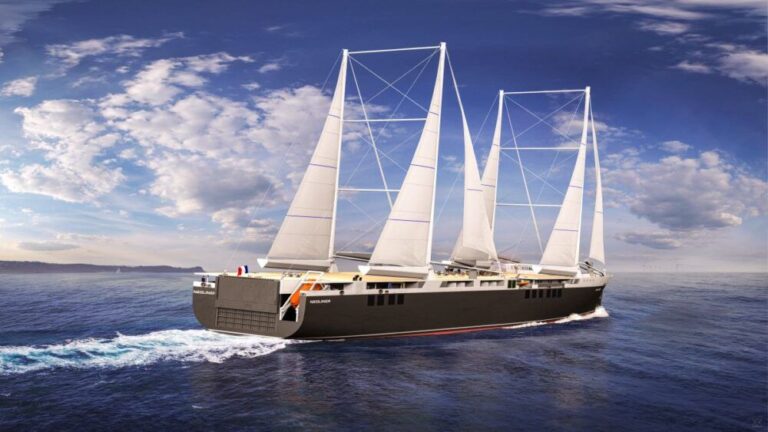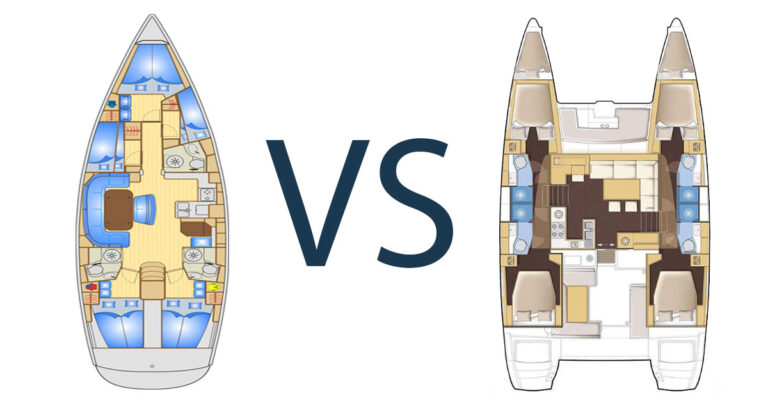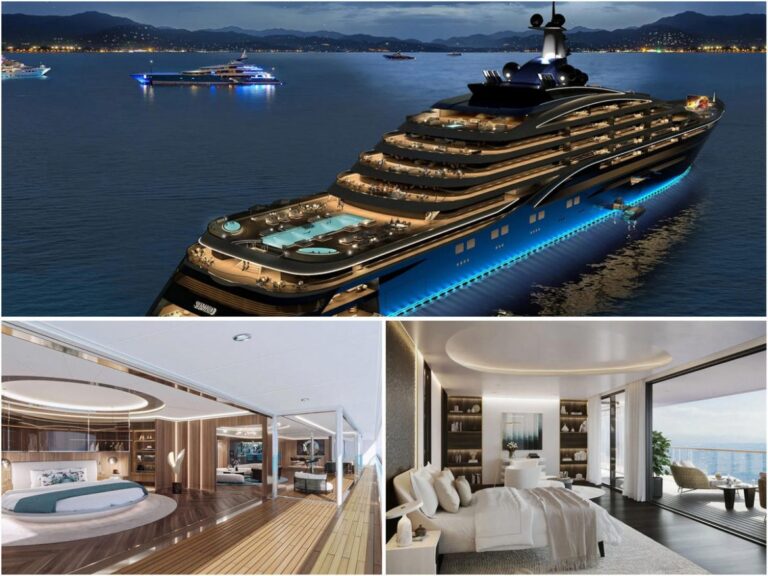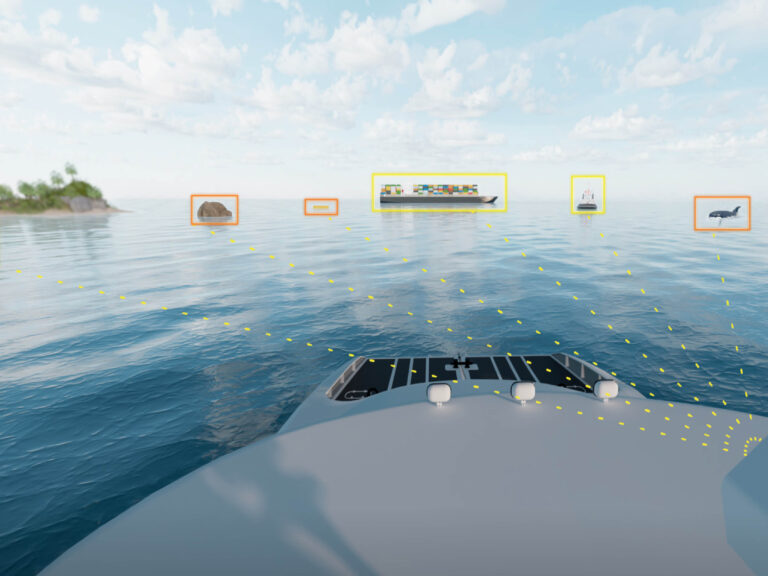Sustainable Boat Building: Eco-Friendly Materials And Practices
Sustainable boat building utilizes eco-friendly materials and practices, creating environmentally responsible vessels. In recent years, there has been a growing demand for boats that prioritize sustainability over traditional construction methods.
These eco-friendly boats are built using renewable and recyclable materials, minimizing the negative impact on the environment. Additionally, sustainable boat builders implement practices such as energy-efficient manufacturing processes and reducing waste during construction. By adopting these approaches, the boat building industry is taking steps towards a greener future, ensuring that boating enthusiasts can enjoy their passion without harming the planet.
From utilizing alternative materials like bamboo and recycled plastics to incorporating energy-saving technologies, sustainable boat building is revolutionizing the industry and setting a new standard for environmentally conscious watercraft.
Sustainable Boat Building: Eco-Friendly Materials And Practices
Discover the world of sustainable boat building and learn about the use of eco-friendly materials and practices. From renewable resources to efficient manufacturing processes, explore ways to minimize environmental impact in the boat industry.
When it comes to sustainable boat building, it is crucial to focus on using eco-friendly materials and adopting practices that minimize the impact on the environment. Traditional boat building methods often rely on materials and techniques that contribute to pollution and resource depletion.
However, the importance of sustainable boat building lies in its ability to create boats that are not only durable and functional but also considerate of the planet’s well-being.
Importance Of Sustainable Boat Building:
- Conservation of Natural Resources: Sustainable boat building promotes the use of renewable and responsibly sourced materials, reducing the reliance on non-renewable resources such as fossil fuels and timber.
- Reduction of Carbon Emissions: By utilizing lightweight materials and adopting energy-efficient building practices, sustainable boat building significantly reduces carbon emissions during construction and operation.
- Preservation of Water Quality: Eco-friendly materials prevent the leaching of harmful chemicals into the water, preserving the marine ecosystem and ensuring water quality remains intact.
- Longevity and Durability: Boats constructed using sustainable practices tend to have longer lifespans due to the use of high-quality materials. This reduces waste and the need for frequent boat replacements.
Impact Of Traditional Boat Building On The Environment:
- Depletion of Forests: Traditional boat building often involves the use of tropical hardwoods that are harvested unsustainably, leading to deforestation and habitat destruction.
- High Energy Consumption: Conventional boat building relies on energy-intensive processes, such as fiberglass production and volatile organic compound (VOC) emissions from paints and coatings.
- Disposal Challenges: Many traditional boat construction materials are not biodegradable, making their disposal a significant challenge. Fiberglass, for instance, poses environmental hazards when not properly disposed of.
- Pollution and Toxin Release: Traditional boat building involves the use of toxic materials like lead-based paints and adhesives, which can leach into the water, causing pollution and harm to wildlife.
Sustainable boat building practices and the use of eco-friendly materials are paramount in ensuring a healthy marine environment for future generations. By embracing sustainability in boat construction, we can create vessels that not only provide joy and recreation but also contribute to the preservation of our natural resources and the overall well-being of our planet.
Benefits Of Using Eco-Friendly Materials
Discover the benefits of sustainable boat building using eco-friendly materials and practices. By opting for these materials, you contribute to preserving the environment, reducing carbon footprint, and promoting a healthier marine ecosystem. Transition to eco-conscious choices for a more sustainable boating industry.
Renewable and Recyclable Materials:
- Opting for eco-friendly boat building materials brings numerous benefits. Using renewable materials means that the resources used are readily replenished or grown, resulting in minimal ecological impact. Additionally, these materials can be recycled at the end of their lifespan, reducing waste and promoting a circular economy.
Use of Natural Fibers:
- Natural fibers, such as flax, jute, and cotton, offer an alternative to synthetic materials. When used in boat building, they provide excellent structural integrity and durability. The use of natural fibers also reduces the reliance on fossil fuels and decreases the carbon footprint associated with manufacturing processes.
Bamboo, Cork, and Hemp:
- Bamboo is a versatile material that grows rapidly, making it an ideal choice for sustainable boat construction. It is lightweight, durable, and has impressive strength-to-weight ratio. Cork is another eco-friendly option known for its buoyancy, water resistance, and insulating properties. Hemp fibers are also gaining popularity due to their strength and flexibility, making them an excellent alternative to traditional building materials.
Non-Toxic and Low VOC (Volatile Organic Compounds):
- Choosing boat building materials that are non-toxic and low in VOCs contributes to a healthier and safer environment. These materials release fewer harmful chemicals into the air, minimizing air pollution and potential health risks for workers and boat owners alike.
Water-Based Paints and Coatings:
- Water-based paints and coatings have become a preferred choice for eco-conscious boat builders. Compared to their solvent-based counterparts, water-based options contain fewer harmful chemicals, emit less volatile organic compounds, and have lower environmental impact during application and disposal.
Bio-Based Resins:
- Traditional boat resins often contain petroleum derivatives, which contribute to the depletion of fossil fuels and greenhouse gas emissions. However, bio-based resins offer an environmentally-friendly alternative. Derived from renewable resources like plant oils and natural resins, these materials provide similar performance while reducing dependency on non-renewable resources.
Energy-Efficient Manufacturing Processes:
- Employing energy-efficient manufacturing processes significantly reduces the environmental impact of boat building. Implementing technologies that minimize energy consumption, such as advanced automation systems and energy-efficient machinery, helps conserve energy resources and lowers greenhouse gas emissions.
Sustainable Energy Sources:
- By utilizing sustainable energy sources like solar or wind in boat building facilities, the reliance on non-renewable energy is diminished. This switch to clean energy greatly reduces greenhouse gas emissions and helps combat climate change while promoting a renewable energy future.
Reduced Carbon Footprint:
- Adopting eco-friendly materials and practices in boat building leads to a reduced carbon footprint. This encompasses a combination of factors, such as choices of materials, manufacturing processes, energy sources, and waste management. Decreasing carbon emissions helps mitigate the impacts of climate change and ensures a healthier planet for future generations.
Utilizing eco-friendly materials in boat building offers a range of benefits, including reduced environmental impact, improved sustainability, and enhanced overall boat performance. By incorporating renewable and recyclable materials, natural fibers, non-toxic coatings, sustainable energy sources, and other environmentally-conscious practices, boat builders can contribute to a greener marine industry.
Innovations In Eco-Friendly Boat Building
Discover the latest advancements in sustainable boat building, focusing on eco-friendly materials and practices. Explore how innovative techniques are revolutionizing the industry, offering a greener approach to constructing boats that are both efficient and environmentally-conscious.
Sustainable Boat Building: Eco-Friendly Materials And Practices
————————————————————
Composite Materials:
- Composite materials have revolutionized the boat building industry with their durability and sustainability.
- These materials are made by combining two or more different substances, such as fibers and resins, to create a strong and lightweight structure.
- Composite materials offer numerous benefits, including resistance to corrosion, high strength-to-weight ratio, and improved fuel efficiency.
Flax Fiber Reinforced Composites:
- Flax fiber reinforced composites are an excellent alternative to traditional fiberglass.
- Flax fibers are derived from the flax plant and provide similar strength and stiffness as fiberglass.
- These composites offer improved vibration damping properties and are biodegradable, making them environmentally friendly.
Bio-Based Epoxy Resins:
- Bio-based epoxy resins are derived from renewable sources such as plant oils or waste products from the agricultural industry.
- These resins offer comparable performance to traditional epoxy resins while reducing the carbon footprint.
- Bio-based epoxy resins are non-toxic and emit fewer harmful volatile organic compounds (VOCs) during manufacturing.
Green Technologies:
- Green technologies are being incorporated into boat building processes to reduce environmental impact.
- These technologies include the use of renewable energy sources and eco-friendly systems.
- By harnessing the power of nature, boats can become more sustainable and efficient.
Solar-Powered Systems:
- Solar-powered systems are becoming increasingly popular in the marine industry.
- Solar panels on the boat’s surface capture sunlight and convert it into energy, reducing the reliance on fossil fuels.
- Solar-powered systems can be used to generate electricity for onboard appliances and propulsion systems.
Hydroelectric Propulsion:
- Hydroelectric propulsion systems use water currents to generate power and propel the boat.
- These systems are environmentally friendly and produce zero emissions.
- Hydroelectric propulsion technology is ideal for river and canal boats, opening up sustainable transportation options.
Recycling And Repurposing:
- Recycling and repurposing materials is an essential practice in sustainable boat building.
- By utilizing recycled materials, such as aluminum or steel, the environmental impact of boat construction can be minimized.
- Repurposing salvaged parts from old boats provides a second life for components that would otherwise go to waste.
Salvaged Materials:
- Salvaged materials, such as reclaimed wood or salvaged metal, offer a unique and eco-friendly alternative to new materials.
- These materials not only reduce waste but also add character and a sense of history to the boat.
- Salvaged materials showcase the beauty of sustainability and repurposing in boat construction.
Upcycling Old Boats:
- Upcycling old boats involves transforming them into functional and beautiful vessels.
- By repurposing old boats, materials can be saved from landfills and given a new purpose.
- Upcycling old boats not only promotes sustainability but also preserves the maritime heritage.
By embracing these innovative materials and practices, sustainable boat building is paving the way for a greener future on the water. The use of composite materials, flax fiber, bio-based resins, and green technologies, along with the incorporation of solar-powered systems and hydroelectric propulsion, demonstrates the commitment of the industry to reduce its environmental impact.
Additionally, recycling, repurposing, salvaging materials, and upcycling old boats showcase the importance of sustainability and giving new life to existing resources. Together, these advancements in eco-friendly boat building contribute to the preservation of our oceans and a more sustainable marine industry.
Sustainable Boat Building Practices
Sustainable boat building practices prioritize the use of eco-friendly materials and techniques to reduce environmental impact. These methods promote the construction of boats that are both durable and environmentally responsible.
:
Design Considerations:
- Designing boats with sustainability in mind involves careful consideration of materials, construction methods, and energy efficiency. By implementing certain design principles, boat builders can create vessels that have a minimal impact on the environment.
Lightweight Construction:
- Building boats with lightweight materials, such as composites and advanced alloys, helps reduce fuel consumption and emissions. Lighter boats require less power to achieve a given speed, resulting in improved fuel efficiency.
Optimized Hull Shapes:
- Boat hulls with optimized shapes can significantly reduce drag and increase fuel efficiency. Through careful hydrodynamic design, boat builders can create hulls that slice through the water with minimal resistance, reducing the amount of power required to propel the vessel.
Efficient Energy Usage:
- Employing energy-efficient systems and equipment onboard boats helps minimize energy consumption and reduces the environmental impact. Utilizing LED lighting, energy-efficient appliances, and smart power management systems can significantly contribute to sustainable boating practices.
Electric Propulsion Systems:
- Electric propulsion systems offer a clean and quiet alternative to traditional combustion engines. Utilizing electric motors powered by batteries or fuel cells eliminates greenhouse gas emissions and substantially reduces noise pollution, making it an eco-friendly option for boat propulsion.
Energy Recovery Systems:
- Implementing energy recovery systems onboard boats allows for the utilization of waste energy and enhances overall energy efficiency. Systems such as regenerative braking can capture and store energy that would otherwise be wasted, providing additional power for auxiliary systems or propulsion.
Waste Reduction and Management:
- Proper waste reduction and management practices are essential for sustainable boat building. By implementing strategies like source reduction and recycling, boat builders can minimize waste generation and ensure responsible disposal of materials.
Minimizing Scrap and Offcuts:
- By carefully planning and optimizing the use of materials, boat builders can minimize the generation of scrap and offcuts during construction. Strategies such as accurate cutting, efficient nesting, and utilizing leftover materials for other purposes help reduce waste and promote sustainability.
Recycling and Proper Disposal:
- Recycling materials used in boat construction is crucial for minimizing the environmental impact. Boat builders can collaborate with recycling facilities to ensure that materials like fiberglass, metals, and plastics are recycled instead of ending up in landfills or polluting natural ecosystems.
Remember, sustainable boat building practices encompass various design considerations, lightweight construction methods, optimized hull shapes, efficient energy usage, electric propulsion systems, energy recovery systems, waste reduction and management, minimizing scrap and offcuts, as well as recycling and proper disposal. By focusing on these practices, boat builders can contribute to a more sustainable and eco-friendly boating industry.
Certification And Regulations
Sustainable boat building relies on eco-friendly materials and practices, adhering to strict certification and regulations for environmental sustainability. By using renewable resources and reducing carbon emissions, these boats minimize their impact on the environment while still delivering high-quality performance on the water.
Boat building has come a long way in terms of sustainability and environmentally-friendly practices. With the increasing awareness of the impact of traditional boat building materials on the environment, manufacturers are now turning to eco-friendly alternatives. In this section, we will explore the importance of certification and regulations in sustainable boat building.
International Standards
- ISO 14001: Environmental Management: This international standard outlines the requirements for an environmental management system. It helps boat builders establish and maintain effective environmental practices that reduce their carbon footprint. Compliance with ISO 14001 ensures that the boat building process is in line with sustainable practices and reduces environmental impacts.
Rina Green Star Certification
- RINA Green Star Certification: This certification is granted by the Registro Italiano Navale (RINA), a leading classification society. RINA assesses the environmental performance of a boat based on factors such as emissions, energy efficiency, and waste management. Boats that meet the stringent criteria receive the Green Star Certification, indicating their commitment to sustainable practices.
Government Regulations And Incentives
- Tax Credits and Grants for Eco-Friendly Practices: Many governments provide tax credits and grants to encourage boat builders to adopt sustainable practices. These incentives not only promote the use of eco-friendly materials but also support research and development of innovative solutions. By offering financial support, governments play a crucial role in driving the transition towards sustainable boat building.
Environmental Impact Assessment
- Environmental Impact Assessment: Before undertaking any boat building project, an environmental impact assessment is often required. This assessment evaluates the potential environmental consequences of the project, including the use of materials and the impact on ecosystems. By assessing the environmental impacts beforehand, boat builders can identify mitigation measures and minimize their ecological footprint.
Certification and regulations play a vital role in promoting sustainable boat building practices. International standards like ISO 14001 and certifications like RINA Green Star Certification ensure that boat builders adhere to environmentally-friendly practices. Government regulations and incentives further encourage the adoption of eco-friendly materials and methods.
Environmental impact assessments help assess and minimize the ecological footprint of boat building projects. By aligning with these standards and regulations, boat builders can contribute to a greener and more sustainable maritime industry.
Case Studies Of Sustainable Boat Building
Discover fascinating case studies showcasing sustainable boat building practices and the use of eco-friendly materials. Learn about innovative techniques that prioritize environmental conservation and reduce the carbon footprint in the boat building industry.
The world of boat building has made significant advancements in recent years to prioritize sustainability and reduce environmental impact. By adopting eco-friendly materials and practices, boat builders are taking important steps towards a more sustainable future. In this section, we will explore a few enlightening case studies of sustainable boat building, showcasing how different companies are making a positive difference in the industry.
Let’s dive in!
X-Yachts: Reducing Environmental Footprint
- X-Yachts, a renowned boat builder, embraces sustainability by implementing various measures to reduce their environmental footprint. Here are some key practices they follow:
- Utilizing lightweight materials: X-Yachts employs advanced composite materials and carbon fiber to construct their boats, reducing weight and energy consumption during operation.
- Efficient hull design: By focusing on hydrodynamic hull shapes, X-Yachts can optimize fuel efficiency and reduce emissions.
- Energy-saving systems: They incorporate efficient electrical systems, LED lighting, and solar panels to reduce energy consumption and reliance on fossil fuels.
- Waste management: X-Yachts prioritizes waste reduction and recycling, ensuring that production practices are as environmentally responsible as possible.
Hydrogen-Powered Daimen 1800 E4: Zero-Emission Cruising
- The Daimen 1800 E4, developed by Hydrogenics, is revolutionizing the boating industry with its cutting-edge hydrogen-powered technology. Here’s what makes it stand out:
- Zero emissions: The Daimen 1800 E4 emits only water vapor, making it an excellent alternative to traditional fossil fuel-powered boats that contribute to air pollution and carbon emissions.
- Fuel cell system: The boat utilizes fuel cells, which generate electricity by combining hydrogen and oxygen, producing power without the need for combustion.
- Renewable energy source: Hydrogen is considered a clean fuel when produced from renewable sources, offering a sustainable solution for boating enthusiasts who prioritize environmental protection.
- Extended range: The Daimen 1800 E4 has an impressive range, allowing boaters to enjoy emission-free cruising without compromising on performance.
The Ocean Cleanup: Tackling Ocean Plastic Pollution
- The Ocean Cleanup is a non-profit organization that revolutionizes the fight against ocean plastic pollution. As part of their innovative approach, they have developed specialized boats with the following features:
- Systematic plastic removal: The boats designed by The Ocean Cleanup collect plastic waste from the oceans, preventing it from harming marine life and ecosystems.
- Advanced technology: These vessels are equipped with specially designed floating screens that passively catch and concentrate plastic debris, allowing for efficient and effective removal.
- Circular economy initiative: The collected plastic is recycled and transformed into new products, working towards a more sustainable and circular approach to plastic waste.
- Continuous improvement: The Ocean Cleanup actively incorporates feedback from each expedition, making iterative improvements to optimize the collection and recycling process.
These case studies exemplify the remarkable progress being made in sustainable boat building. Companies like X-Yachts, Hydrogenics, and The Ocean Cleanup are taking significant strides towards creating a more environmentally conscious and responsible boating industry. Through their innovative approaches, these organizations inspire others to follow suit and contribute to a healthier and more sustainable future for our oceans and the planet as a whole.
Future Trends In Sustainable Boat Building
Discover the latest trends in sustainable boat building, including the use of eco-friendly materials and innovative practices that prioritize environmental consciousness. Explore how these advancements are shaping the future of boating with a focus on sustainability.
As the world embraces more sustainable practices, the boat building industry is also evolving to meet the demands of environmentally conscious consumers. Here are some future trends in sustainable boat building:
Advanced Materials And Technologies
- Advanced materials: Boat builders are exploring new materials that have a lower environmental impact, such as lightweight composites and natural fiber reinforcements.
- Technologies: Cutting-edge technologies like 3D printing and virtual reality simulations are being used to optimize design and manufacturing processes, reducing waste and maximizing efficiency.
Bio-Composites
- Natural fibers: Boat builders are increasingly using plant-based fibers like flax, hemp, and sisal as alternatives to traditional glass fibers.
- Bio-resins: Bio-based resins derived from renewable sources like vegetable oils and starches are being used instead of petroleum-based resins, reducing the carbon footprint of boat building.
Nanotechnology
- Self-cleaning coatings: Nanotechnology allows for the development of self-cleaning coatings that can repel marine growth, reducing the need for toxic antifouling paints.
- Enhanced strength and performance: Nanomaterials can enhance the strength and performance of boat hulls, making them more durable and efficient.
Circular Economy Principles
- Material reuse: Boat builders are adopting circular economy principles by using recycled and repurposed materials, extending their lifespan and reducing waste.
- Remanufacturing and refurbishment: Rather than disposing of old boats, remanufacturing and refurbishment are becoming popular practices to give boats a new lease on life.
Closed-Loop Manufacturing
- Efficient material utilization: Closed-loop manufacturing processes aim to minimize waste by optimizing material utilization during boat construction.
- Controlled emissions: Strict pollution control measures are being implemented to minimize the environmental impact of manufacturing processes.
End-Of-Life Recycling Solutions
- Responsible disposal: Recyclable boat components are being designed to facilitate their proper and environmentally friendly disposal.
- Recycling facilities: Specialized facilities are emerging to handle boat recycling, ensuring valuable materials can be recovered and reused.
The Role Of Consumer Demand
- Driving innovation: Increasing consumer demand for eco-friendly boats is pushing boat builders to invest in sustainable practices and develop greener products.
- Educated choices: Educated consumers are prioritizing sustainability when making purchasing decisions, encouraging the industry to adopt more environmentally friendly practices.
Increasing Demand For Eco-Friendly Boats
- Sustainability in boating: Boaters are becoming more conscious of the impact their recreational activities have on the environment, fueling the demand for eco-friendly boats.
- Low carbon footprint: Eco-friendly boats offer reduced fuel consumption, lower emissions, and less harm to marine ecosystems.
Influence Of Sustainable Lifestyle Trends
- Rise of sustainable living: The growing popularity of sustainable lifestyle trends, including ethical consumerism and responsible tourism, has translated into an increased interest in eco-friendly boating.
- Eco-conscious consumers: Individuals who prioritize sustainability in their everyday lives are extending their values to their boating activities. They seek vessels that align with their sustainable lifestyle choices.
Sustainable boat building is not only beneficial for the environment but also for the future of the boating industry. With advanced materials, innovative technologies, and a strong focus on circular economy principles, the industry is moving towards a more sustainable and eco-friendly future.
The increasing demand for eco-friendly boats and the influence of sustainable lifestyle trends are driving this positive change.

Credit: inhabitat.com
Frequently Asked Questions On Sustainable Boat Building: Eco-Friendly Materials And Practices
What Are The Eco-Friendly Materials For Boats?
Eco-friendly materials for boats include recycled plastics, reclaimed wood, and sustainable composites made from bamboo or hemp fiber.
How Can I Make My Boat Eco-Friendly?
To make your boat eco-friendly, limit fuel consumption, reduce waste, use eco-friendly cleaning products, and avoid harmful chemicals.
What Is The Most Sustainable Boat?
The most sustainable boat is one that uses eco-friendly materials, efficient energy systems, and minimizes carbon emissions.
Is A Boat Environmentally Friendly?
Yes, a boat can be environmentally friendly due to advancements in technology and eco-friendly practices.
Conclusion
To sum up, sustainable boat building is a vital practice that prioritizes eco-friendly materials and practices. By using materials like natural fibers and low-toxicity resins, boat builders can minimize their ecological footprint. Additionally, incorporating sustainable practices such as responsible waste management and energy-efficient manufacturing processes further enhances the sustainability of boat building.
Not only do these eco-friendly approaches benefit the environment, but they also contribute to the longevity and durability of the boats themselves. Choosing sustainable boat building means investing in a future where both the marine ecosystem and the boating industry can coexist harmoniously.
As consumers, we have the power to support and demand sustainable practices in the boat building industry, driving positive change towards a more environmentally conscious future. So let’s make a commitment to embrace sustainable boat building and be part of the solution for a greener and more sustainable world.






